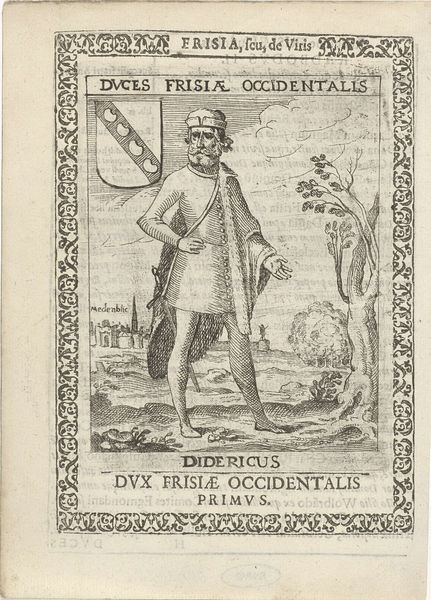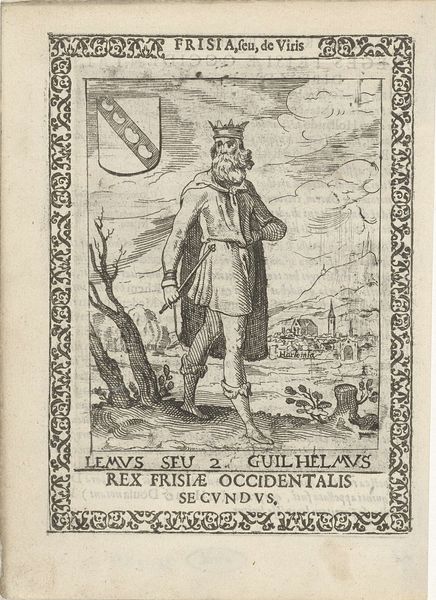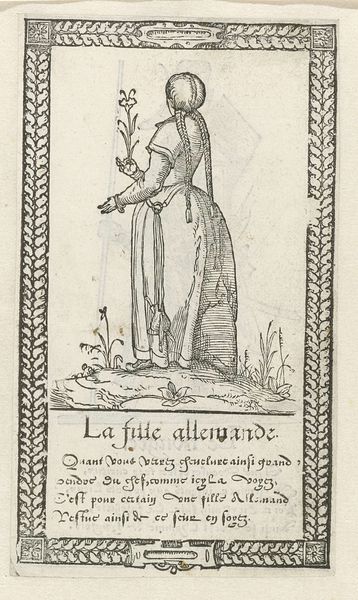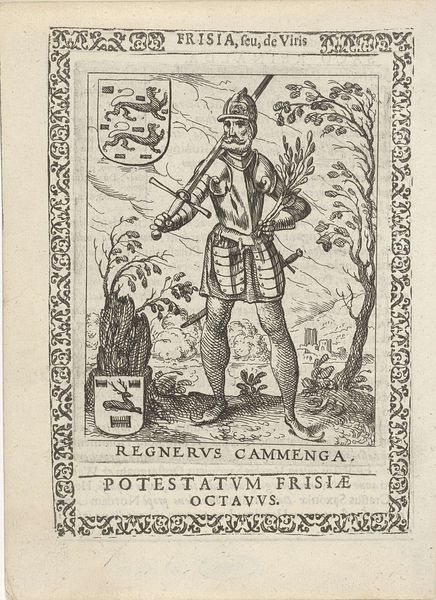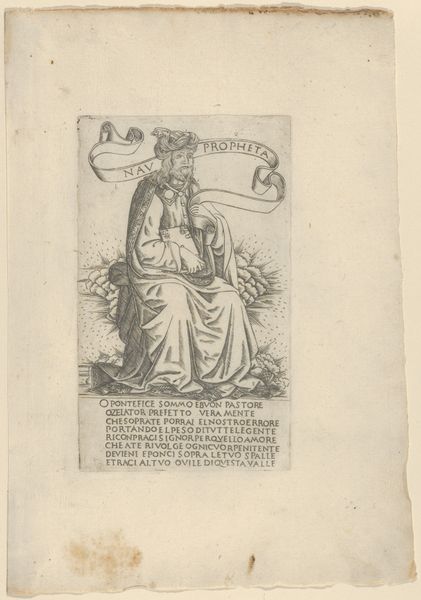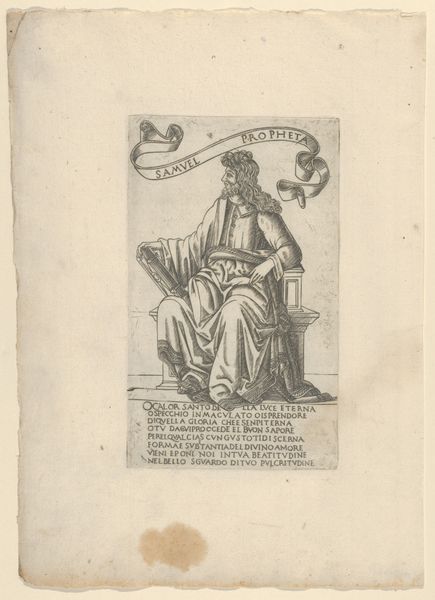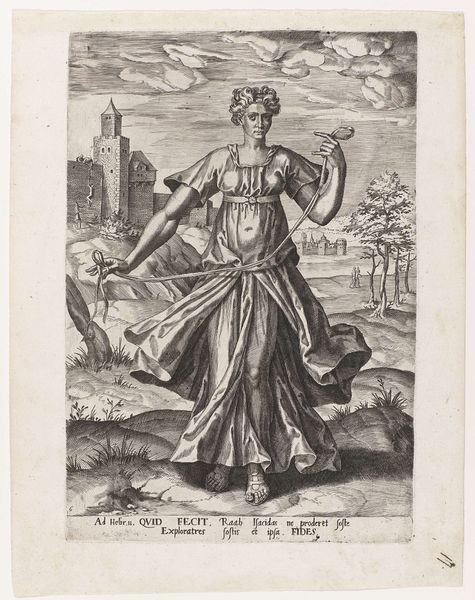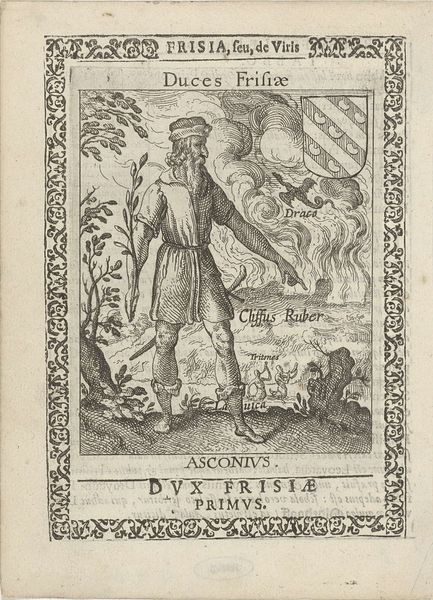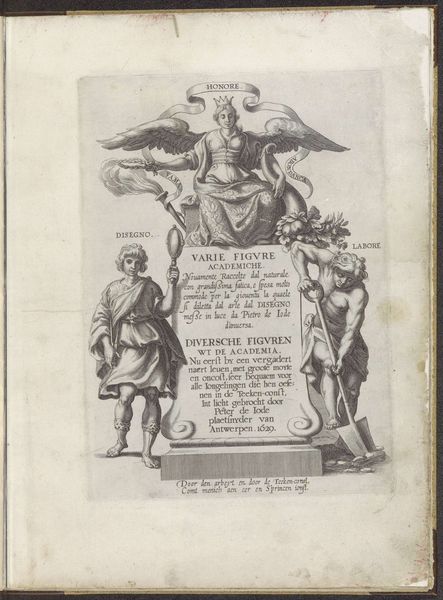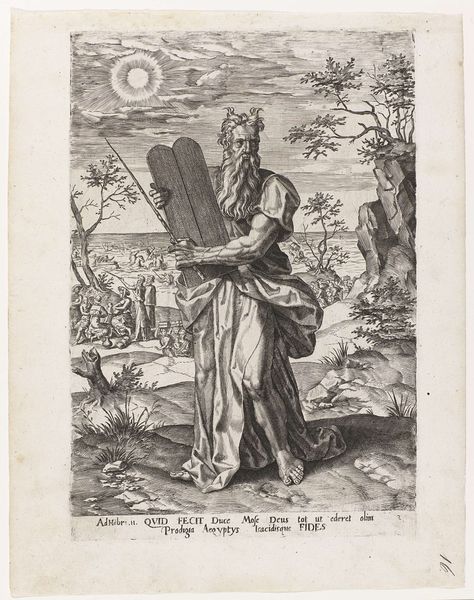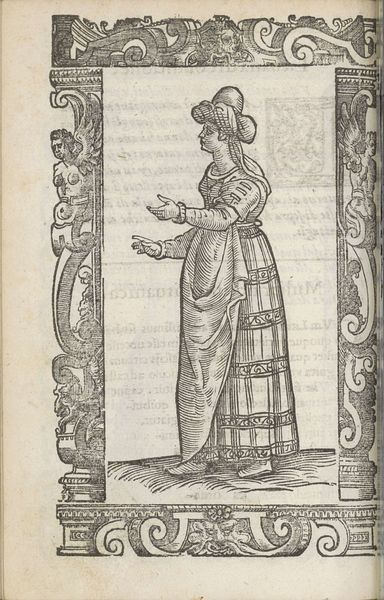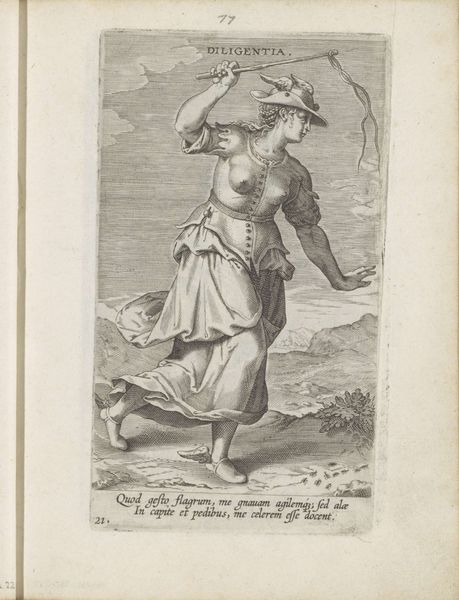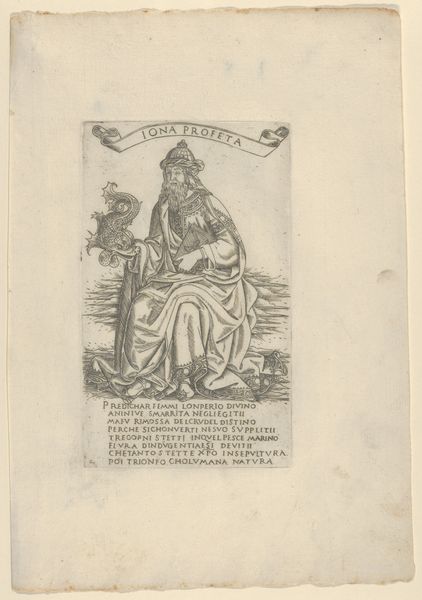
print, engraving
#
portrait
#
medieval
# print
#
figuration
#
engraving
Dimensions: height 125 mm, width 100 mm, height 158 mm, width 115 mm
Copyright: Rijks Museum: Open Domain
Curator: Here we have Pieter Feddes van Harlingen's engraving from around 1618 to 1620, "Dibbaldus, eerste koning der West-Friezen," which translates to "Dibbaldus, first king of the West Frisians." It's currently held at the Rijksmuseum. Editor: It's a striking image, although somewhat stern. The figure of Dibbaldus dominates the scene, with this determined gaze. The detailed armor gives him an immediate presence and almost tangible strength. Curator: Absolutely. Consider the medium, though: engraving. It suggests a specific kind of artistic labor, a painstaking process of etching and printing. Think about the artisan's hand involved in reproducing these images—perhaps destined to popularize the history, or even create a heroic origin, of Friesland. Editor: That’s true, it lends the image a powerful, symbolic quality, associating him with a specific territory through the ages. I notice that even his outfit makes this assertion; notice, for example, the decorative fur lining on his boots that suggest someone living close to the land and its natural environment. The shield hanging in the background acts as an immediately identifiable emblem. Curator: It does emphasize his sovereignty, tying him to place, identity and ownership. The meticulous details of his attire, including that elaborate chest armor and its curious spiraling form at his right shoulder, speak of significant investment, a clear display of wealth and status created, ultimately, through intensive resource extraction and material production. Editor: And yet, even the figure’s stance speaks volumes: The weight distribution suggests a readiness for action, for combat, perhaps, hinting at some historical conflict, whether factual or symbolic, reinforcing this region. And do consider what weapons communicate; not only does he wear armor, but in his right hand, the sword symbolizes authority, justice and, naturally, the power of enforcement. It seems this portrait had a very clear intention. Curator: Precisely! And engravings such as this would be reproduced multiple times and would therefore have a widespread appeal, particularly as an object circulating among an increasingly literate population eager to consume the histories, however apocryphal, of rulers and their territories. I keep thinking of the workshops. Editor: Indeed! Its long-term value rests as a visual articulation of kingship as a potent archetype that has continued to endure across diverse representations to the present. Curator: Yes, something crafted not simply to look but to signify, with layers of making imbued within. Editor: Absolutely, so many potential avenues for exploration!
Comments
No comments
Be the first to comment and join the conversation on the ultimate creative platform.
